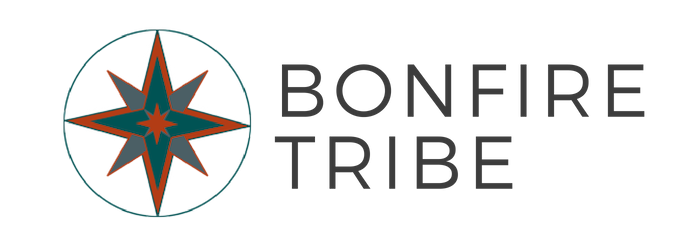
Managing people is tough. It’s hard to make sure that all the stuff that is supposed to be happening is actually happening, particularly when you’re an entrepreneur running a small outfit. It can feel like you’re the only one keeping all the plates spinning – always checking in with employees on expectations, modifying rules, consequences, HR stuff, hiring, firing, and training. The list goes on.
When things go wrong, it’s an easy to blame people and wonder what the hell is wrong with them. Why don’t they do what they are supposed to be doing? However, after all my years of managing people, I believe that people don’t fail, for the most part. Systems, community, culture, or relationships fail.
Generally people generally want to be doing the right thing, but issues get in the way. Employees generally want to be on the winning side of a game. They want their customers and co-workers to be happy. So, given the choice, they will do what is appropriate to make that happen. When this isn’t happening, it generally means one of three things is present:
- They are not feeling supported on a personal level and are disengaged
- There wasn’t a robust enough system in place to support people in doing the right thing
- They didn’t have something they needed to do the job, such as training, skill, or equipment
The Trap
For many small employers, there is hardly enough time to help each employee be personally engaged, much less perfecting systems, and doing enough training. Reading a list like that may feel profoundly unhelpful, because how are we supposed to do all those thing perfectly when we’re already working our hardest and trying our best.
The trap that many entrepreneurs find themselves in is buying into the idea that our businesses are essentially fancy machines. The trap goes something like this; if I just get all of the moving pieces of my business just right, then it will just continue as it should without my constant fixing and adjusting. If this isn’t happening, I’ve done something wrong and I must keep fixing.
In that mindset of the machine, when we read a list of what may be getting in the way of team performance, we internalize it into something we must do personally. It’s our job to design and fix the machine.
There’s another way of looking at this problem, through the lens of the Bonfire metaphor for business.
The machine approach is simultaneously too simple and too difficult to produce high-functioning, dynamic teams that can handle the natural variations in our businesses.
The Bonfire Approach
The truth is that our businesses are constantly shifting and changing in response to the environment. Employees and customers are human beings, not cogs. They never will be. The idea of the machine, as applied to real life, is a recipe for overwork and frustration for everyone.
The Bonfire metaphor for business suggests that a business is like a bonfire, where people gather around a central idea, participating in different ways, at different levels of engagement, and people are all in equal relationship with one another. There’s no one in the center of the fire, trying to make it right, like the in the machine. That would be crazy, since fires kill people. So, everyone is on the edge, participating in a community with variation in individual contribution. At the Bonfire, people each have different points of view, with independent relationships to each other, and a lot of natural variability in how people can organize themselves.
The Bonfire metaphor is another way of describing well-functioning community. When you have a team of people who are committed to each other, to you, and the mission of the organization through a strong sense of community, you have access to all the intelligence and skill of the group. Each person is welcomed and encouraged to step up and do their best; not because of their compensation package, but because their own sense of self is woven into the greater whole. Community creates the dynamic, intelligent management systems that can guide organizations through complex and shifting dynamics.
Community
A strong sense of community is the most important element in maintaining stability in our complex businesses. If your employees individually have the sense that this is my place, then they will feel it is my job to make sure that it’s OK. Employees will use their own intelligence, creativity, passion, and curiosity to maintain and even grow their place to help it flourish. On the other hand, they won’t bring their best selves if they do not feel that they belong or what they belong to is not a place they cherish.
What does sense of community mean? Here’s some guiding questions.
Do they feel:
- That they belong and are important?
- Safe to share who they are and some of their internal world with co-workers and customers?
- That this place, wherever or whatever it is, is a part of them and them a part of it?
- Respected?
- That they can participate in affecting change and development?
- Challenged to perform at their best?
A sense of community and belonging is the source of motivation for employees to care about the mission, maintain the culture, participate in communication norms, and follow systems. Without a sense of community, you essentially have a group of people who you have to hold hostage through sticks (punishment) and carrots (money and/or power). Without community, people won’t act above and beyond expectations for very long, if at all.
Ultimately, the result is you lose the opportunity to tape into the intelligence of all these great people who are showing up to work for you. Each of these people have so much more to offer than what we ask of them through job descriptions; more wisdom, creativity, judgement and initiative.
One the wonderful things about people is that we generally want to share our greatness. We want to share our ideas and goodwill. However, we can’t or won’t share our best selves where we aren’t welcome or safe to share ourselves. We are all diminished for this loss, as are our businesses and our world.
Creating Community
It is simultaneously simple and difficult to create community, either in or out of the workplace. Community flourishes in environments where people feel safe to express themselves authentically and that their contribution is important. Quote something here.
As a leader, the way you interact with your organization is the most important element. In order to create community, you’ll be asked to be open, caring, transparent, and flexible.
Do you?
- Acknowledge, honor and care about people’s individuality
- Share your own individuality and vulnerability
- Prioritize relationships and individuals over rules
These are simple things, and yet in the pressure cooker situation of business in action, it asks a lot of you to maintain the focus on caring, curiosity, openness, and respect. For many of us, our response to challenges is to try to control situations, adhere to rules, and hide our own pain.
Opening up to the Bonfire
When there’s a failure at work, do you assume it happened because people just don’t do what they are supposed to do? Wanting people to just “do their jobs” is the machine-mentality in action. We’re living in the machine when we need people to be cogs and not people. This always leads to breakdown.
It’s also machine mentality to assume that it’s our jobs as leaders to be the fixer of the situation. Even if we are open to the idea that teams fail due to disengagement, system failure, or unfilled needs, if we assume that we are the ones to fix it (and no one else), then we are still stuck in a position where we are overworked, isolated, frustrated, and slowing or stopping the flow of potential wisdom and capacity from employees.
Managing in community means that we start with the assumption that our employees are capable, well-intentioned, and they likely have the insights needed to improve the team, if they are invited to express their ideas and create the team together.
What does this look like? Let’s go back to the list of causes in team breakdowns and go through a scenario from my experience in running my café, Hi Point Coffee and Café, to explore each one.
Disengagement
When an employee seems to be disengaged, a lot of different things could be happening. And you won’t know until you ask in such a way that is respectful and emotionally open enough to hear their truth. If there are issues of disengagement swirling in the midst of your team, no amount of setting of rules and clarifying expectations will help your employees to perform at their highest capacity. They might perform at an acceptable capacity, but not their best. To do their best, people must want to do it, and feel supported and included in the team.
I had a long time employee who worked at various locations and we just never quite got along. She did good work and was deeply cared for by our customers and other staff members, but she didn’t like me for various reasons. For the most part, this was completely OK with me. We’d occasionally talk about our issues, but nothing really was resolved over the course of years. I was happy enough that she was doing her job well and participating in the team. She had the potential of being a brilliant performing employee, but I didn’t push it. We had a détente that worked reasonably well for a long time.
Unfortunately her attitude towards me eventually became so bad at one point that fellow co-workers were telling me that her attitude was disruptive to them and that she was grumbling to customers about me. Her disengagement and dissatisfaction had become an active problem that I couldn’t ignore.
We had already had multiple little talks over the years, so it was time to lay it all out on the line. I asked her to meet me away from work for some privacy and neutrality. And I prepared myself to be truly open and hear what she had to say.
But, I was also afraid of what she’d say. She was my biggest critic and I asked her to come tell me all of the reasons why. My plan was to listen without defense and to trust that she and I were both good people who ultimately want the same things. I trusted that we both wanted to be heard and respected, our work to be harmonious and for the team to function well.
The details of how that conversation actually went aren’t particularly important and are private, but what is important is that we were both able to be very honest about our experiences of each other and the assumptions we had both been making. We were both eventually able to come to a place of care and understanding for each other. To this day, we are big fans and supporters of each other. We can talk deeply and honestly and it changed our work together til I sold my company.
This happened primarily because I was willing to be vulnerable, allow myself to hear her without defense and know that I wanted what was best for the both of us. When I showed up willing to listen, hear some hard truths and still be open, it allowed her to also be vulnerable and honest about herself. We both came to a place of change and understanding.
I could have defended, not listened, told her to shape up or ship out, but that would not have resulted in the outcome that I wanted. The outcome that I wanted was a powerful team built around trust, caring and community. I won’t lie and say that this conversation wasn’t without pain or fear, but it was transformative for us and our working relationship. From that moment forward, she was engaged and willing to participate at a deeper level in our community.
More importantly, I demonstrated to the rest of my team that I was committed to authentic relationships and the quality of our shared workplace. I showed that I could be vulnerable enough to hear criticism, respond appropriately, and maintain a caring relationship. This builds trust for people to know that they could bring their issues to me without fear of rejection or retribution.
Breakdown in systems
At my café, one of the biggest problems we had was communication between the counter staff and the kitchen, particularly when it was busy. When everyone is working at maximum capacity, the kitchen crew needs to be able to think several tickets ahead and organize a tremendous amount of information on timing and all the possible variables, plus managing the one off requests. Great line cooks are geniuses. They manage a miraculous coordination of time and bodies in tight, hot spaces with dedication to the product. However, it’s next to impossible to do this amazing dance if all the tickets are written inconsistently and/or incompletely. Granted, the front of house staff has their own dance with gracious smiles along with it. Food service is tough, no way around it, and fights between the kitchen and the front of house staff are not uncommon.
Since I was neither kitchen staff nor a counter person most of the time, whatever system I devised would probably irritate everyone. So, I could have really dug in to the problem and talked to both sides, come up with compromises, defined a system, trained everyone on it, and required adherence to the system. Problem with this approach was it would have been a lot of work for me that I didn’t have time to do or want to do.
What we did instead was have the staff hash it out for themselves. They defined the system, taught each other, and continually corrected and improved the system, without me needing to be involved. If I had applied a fix from the top, it would sometimes work, but there would be no way for my “fix” to be nearly as efficient as what my staff could produce. Since I wasn’t actually doing these jobs, I was the least helpful person to make these decisions. My job was to make sure that people made decisions in a respectful, efficient manner and that the new system ultimately addressed the issue.
This way of problem-solving worked really well, until the moments I had to jump in to work the counter and realized that I didn’t know what my staff knew. I needed training and correction to fit into the system that they designed for themselves. Thankfully, they all just laughed at me a lot for being so clueless in my own world, while correcting me as I went or perhaps nicely telling me that my “helping” was not actually so helpful and perhaps I should go greet customers. Personally, I was grateful I had the luxury of being clueless. It wasn’t my system to implement. It was theirs and it worked.
Training
When I first had employees, I loved training. I enjoyed telling them all about why we do what we do and how we do it. We brought people on in a rich way so that they could speak to the values of the company and follow through with skill. Over time, my dedication to training fell apart because I saw training as expensive, time consuming, and a distraction from the real work. Turns out, I was wrong.
The truth is that you can’t train your crew once and check that item off the list. Organizations are shifting all the time. People come and go, products and services change and ongoing practices shift and adapt to a changing environment. This makes training an essential and continual process for any company.
Here’s some examples of what can happen when there’s inadequate training. In my company, I observed a great deal of variation in processes. I tended to not worry over variation in procedures, since the strength of our community smoothed a lot of bumps in the road. However, there were points when the variations became detrimental and tension developed between people who champion competing ways. New employees entering the flow were not always clear on which method to follow and sometimes even came up with their own variation as a survival technique.
New employees’ ability to get up to speed was also slowed down. New employees sometimes felt hesitant to jump in because they are afraid of not knowing what’s right. It’s not hard to imagine how people could become increasingly disengaged out of fear of their own perceived inadequacy, particularly if they do inadvertently cause an important team failure. The new employee may resent the lack of support while others on the team may resent the new person’s “inability” to figure it out. Frustration sets in and a rift is created in the community.
In part, I resisted on-going training, because I believed in the fairy tale moment when all of my crew would all be simultaneously well-trained and then we could do “the real work.” However, that’s an illusion. Training is part of the real work or maybe even is the real work, with the good output of the team being a natural consequence of good training. The complex, shifting nature of our world demands that we live in a state of constant change and this requires an on-going, constant practice of training.
My staff would have thrived with an ongoing training schedule, if it was done well. Some on my staff even asked for it and suggested how we could do it. When we did get together as a company for training on skill or values, people thanked me for the opportunity. My staff wanted to achieve greater levels of performance than they were able to achieve at the level of training I was providing. They told me so, gave me ideas and they all would have helped build community, self-confidence, cohesion, improved quality as well as clarity of purpose and values amongst my staff. On-going training is not just about knowing the steps, but really learning how to dance.
So, why didn’t I do it? I saw extensive training as too expensive in materials, payroll dollars, and time. I mostly told myself that the existent training was fine, because I couldn’t see another way of making it better. I was looking at it through the machine mentality; as if it were my problem to solve and that I would need to be the source of all this great new training.
Now, I wonder what would have happened had I seen this problem through the lens of the Bonfire. What would it have been had a not made it my problem to fix, but opened up the question to my staff and asked them to tell me how they wanted to be trained. Likely some on my staff wouldn’t have any idea or new ideas, but there were also more than a few who would have jumped at the opportunity to help create a training system that would have been powerful, and worked within my budget and time constraints. I know this because I ignored their suggestions for after-hours get togethers, internal latte art contests, best new beverage competitions, and family dinners prepared by new employees.
I always had a great staff and we did great things together. However, I know that there was another level that could have been unleashed with a fun, dynamic approach to training that my staff had suggested. Not only would we have done better work together, some of my sense of being overworked would have been soothed by a commitment to community-based training for my staff. I would not have been holding the burden of training, while not doing a great job with managing that burden. Instead, I could have allowed people to bring their own wisdom and creativity to the problem, while deepening the sense of community and providing a relatively pain-free mechanism for consistently communicating innovation in systems.
There’s many benefits to managing people through the power of community and the Bonfire lens, including providing a means of enhancing community while lifting the burden of being the “fixer” off of you. However, it does ask us as leaders to be able to be open and vulnerable, with great skill in managing relationships. It is not necessarily an easy path, but most certainly a more powerful approach to management of people.
Questions to consider for yourself:
- How do teams fail in your world? Is it consistently one versus another? Are they big or little? What can you learn by asking how and why there’s team failures?
- How do you react to team failures? Do you blame people? Do you hate it? Do you try to ignore it? Do you get curious and find it to be an opportunity to learn? Where do your reactions fall in that spectrum? Are you reacting in a way that’s helpful to yourself? To the overall goals of your organization?
- Pick a team failure that you’d like to learn from. Where do you think the breakdown is? Systems? Engagement? Training? All three? Why?
- What can you do to address the breakdown points? What support do you need to make those changes? What scares you about it? What’s exciting about it? Do you need resources? Can you get them? Do you have the support you need?
- What if you’re the one causing team failures? Where are you breaking down? Systems? Engagement? Training? What can you do to affect change? What do you need?




